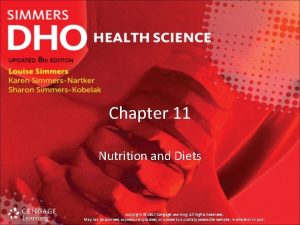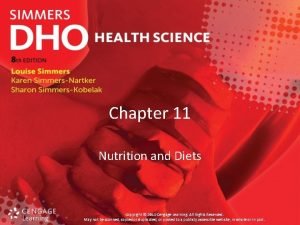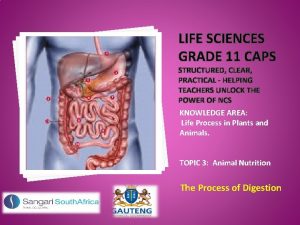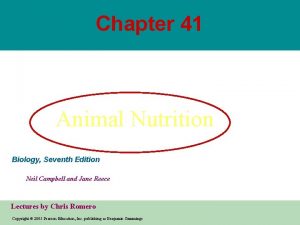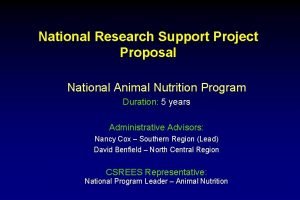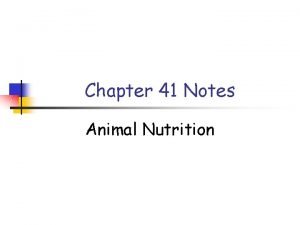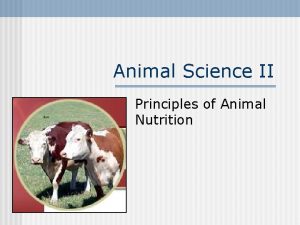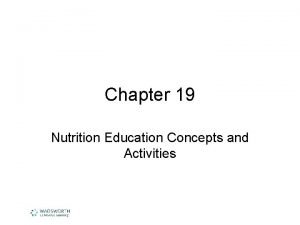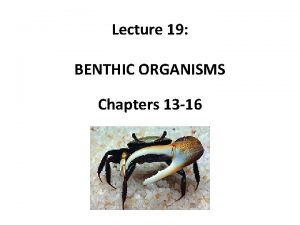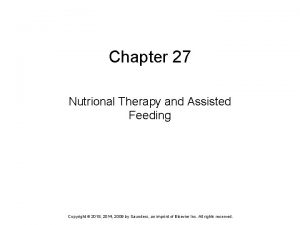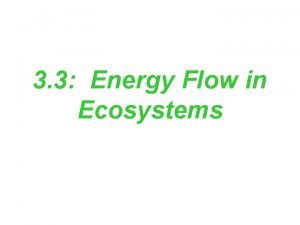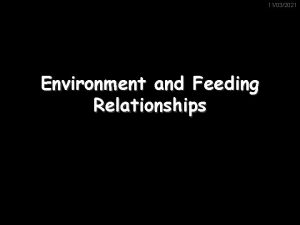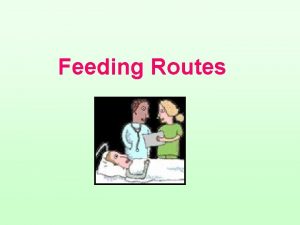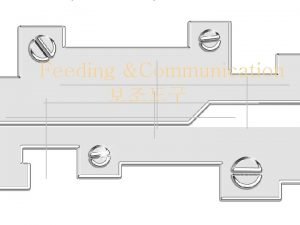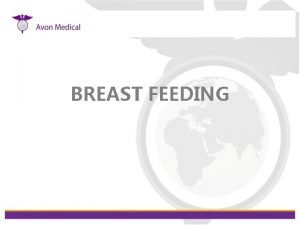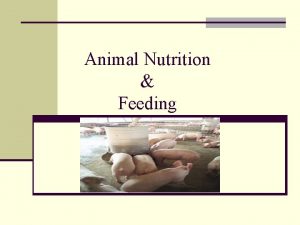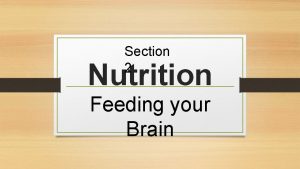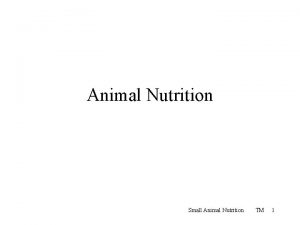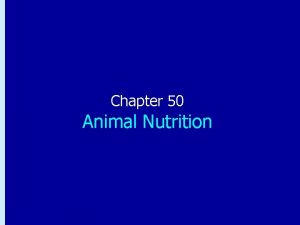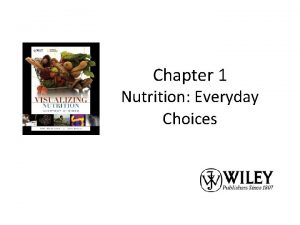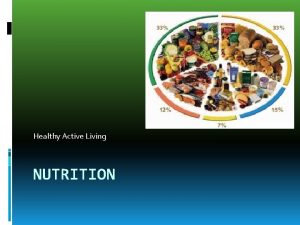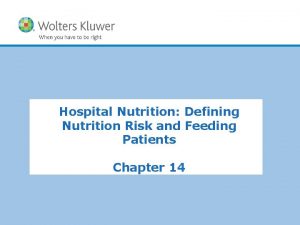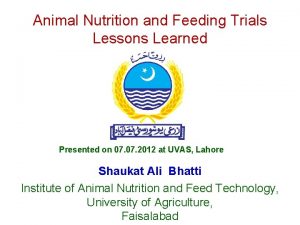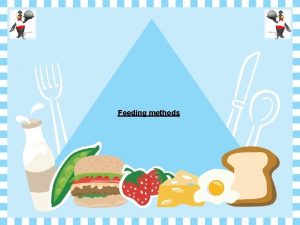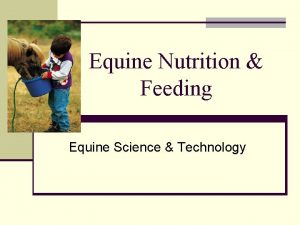Common Terms Used in Animal Feeding and Nutrition


























- Slides: 26

Common Terms Used in Animal Feeding and Nutrition

q. NUTRITION : Science involving various chemical & physiological activities , which transforms feed elements ( nutrients) into body elements. q. Feeding : It is the practical application of nutrition consideration of Management , formulation , palatability and economics.

q. Nutrient : They are elements, compounds or groups of compounds that are used for animal nourishment and performance. examples : Carbohydrate, proteins, fats, minerals, vitamins and water. q. Feed : It is a material which after ingestion by the animal is capable of digestion , absorption and utilized. Ø Feed is the carrier of nutrient.

q. Feed stuff : Any product of natural origin or artificial that when used has nutritional value in diet. ü It includes natural feed of animal origin , plant origin or synthetic nutrients. ü q. Nutritive Value (NV): Refers to a feed’s protein, mineral and energy composition, availability of energy, and efficiency of energy utilization.

q. Nutrient value of feed : An indicator of a feed to its digestibility of DM%. feed can be classified as : Above 70% 60 -70 % 40 -60% Less than 40% good moderate low very low

q. Nutritive ratio : It is the ratio of the digestible protein to the sum of digestible non protein compound ( carbohydrate , fat *2. 25 ) ü It is termed albuminoid ratio. ü Feed higher in protein has narrow nutritive ratio. ü Feed lower in protein has wide nutritive ratio. ü Carbonaceous feed has wide nutritive ratio. ü Nitrogenous feed has narrow nutritive ratio. ü

q. Protein: ü Protein is an essential nutrient. ü Proteins are composed of long chains of amino acids. ü Animals meet their protein needs by breaking down plant and microbial protein and reassembling them as animal proteins. Function : Major component of vital organs, tissue, muscle, hair, skin, milk and enzymes. ü Protein is required on a daily basis for maintenance, lactation, growth and reproduction. ü

q. Amino Acids: They are molecules containing : 1. 2. 3. Amine group Carboxylic acid group A side chain that varies between different amino acids.

q Amino acids are the building blocks from which protein is made in the body. q. There are 20 known standard amino acids forming various proteins. q Essential Amino Acid : Histidine Valine Tryptophan Methionine Leucine Isoleucine Phenylalanine Lysine Theronine

q. Non Essential Amino Acid : Alanine Cystine Aspartate Glutamate q Conditional Amino Acid : Arginine Glysine Asparagine Proline Tyrosine Glutamine Serine

q. Crude Protein (CP): All nitrogen required by the animal used for protein synthesis. ü Total nitrogen (N) in the diet : (true protein & non-protein nitrogen × 6. 25 ). ü Proteins generally contain 16 percent nitrogen. ü CP is merely an estimate of nitrogen content. (N % × 6. 25 = CP %) ü

q. Non-protein Nitrogen (NPN): NPN refers to nitrogen in a feed sample that is not in the form of protein but can be used by the microbial population in the rumen or gastro-intestinal tract to synthesize amino acids and proteins. ü Common forms of NPN are urea and ammonia. ü Nitrate is not included in non-protein nitrogen Because N is an integral part of any amino acid. ü

q. Degradable Intake Protein (DIP) : Portion of crude protein that is degraded to ammonia & amino acid in rumen by microbes. q. Un Degradable Intake Protein (UIP) bypass protein, escape protein or Rumen Un degradable Protein (RUP) : Not degraded in the rumen but is degraded in the abomasum.

q. Methionine : An essential sulfur containing amino acid involved in many vital enzymatic processes in the human and animal body. q. Lysine : Lysine is an essential amino acid for protein synthesis. It is the first limiting amino acid in corn/soybean-based swine diets.

q. Carbohydrates: They are biochemical compounds composed of carbon, hydrogen and oxygen. ü They are main source of energy for animals. ü Classification of carbohydrates : 1 - Non-structural carbohydrates. They are used as energy reserves (sugars, starch, and pectin). 2 - Structural carbohydrates They are used for providing fiber and anatomical features for rigidity and even water transport. (fibrous cellulose, lignin and hemi-cellulose).

q. Crude Fiber (CF): ü The more fibrous, less digestible portion of a feed. ü When CF content is higher, the energy content of the feed is lower because crude fiber is considered indigestible. ü Crude fiber is digested by microorganisms in the rumen. q. Acid Detergent Fiber (ADF): ü ü least digestible fiber portion of forage or other roughage. This highly indigestible part of forage includes: lignin, cellulose, silica.

q. Neutral Detergent Fiber (NDF): ü NDF contains plant cell wall components. ü Represent the fibrous bulk of the forage and include : hemicelluloses, cellulose and lignin. ü Lignin is indigestible. ü Hemicelluloses and cellulose can be digested by microorganisms in animals rumen. ü NDF concentration is negatively correlated with dry matter intake. (As NDF in the forage increases, animals will consume less forage)

q. Fat: ü Fats are “triglycerides of fatty acids”. ü Fats are composed of building blocks called fatty acids. ü Fat is rich in energy; it contains 2. 25 to 2. 8 times the energy found in carbohydrates and is highly digestible. ü Fat is added to rations when intake may be limited due to: 1. Poor animal health. 2. Less palatable feed. 3. Environmental stress.

q. Ether Extract: Ether extract is a portion of dry matter extracted with ether. ü Includes some waxes, pigments. ü EE may solubilize some other compounds like plant pigments, esters and aldehydes. ü True fat can be measured by ether extract minus one. ü

q. Roughage: Any feed high (over about 20%) in crude fibre and low (under about 60%) in TDN, on an air-dry basis. ü Roughage refers to bulky and coarse feed high in fiber (greater than 18 percent crude fiber) but lower in energy than most concentrates. ü For example: forage, hay, silage and haylage are sometimes called roughage. ü q. Concentrates : Concentrates refer to animal feeds that are rich in energy and/or protein but low in fiber. ü For example: corn, soybean meal, oats, wheat, molasses. ü

q. Balanced Ration : Complete feed formulated to provide animal with appropriate amounts of all nutrients required for maintenance and a given level of performance. q. Balanced diet : It is feed supply of all essential nutrients in proper amounts required for optimum performance. q. Basal feed : Concentrated source of energy ( starch , sugar ).

q. Dry Matter (DM): Everything contained in a feed sample except water. Includes : protein, fiber, fat, minerals, etc. Ø It is the total weight of feed minus the weight of water in the feed, expressed as a percentage. Ø q. Dry Matter Intake (DMI) : Is the amount of dry matter consumed by the animal intake increases as the digestibility of the forage increases.

q. Dry Matter Basis “Dry Basis, ” “Dry Results” or “Moisture-free Basis: Nutrient levels in a feed sample based on its dry matter content. q. As-fed Basis “As-is Basis” or “As-received Basis: Ø Feed analyses reports often state results based on the feed’s natural state including water. Ø It is affected by the sample’s moisture level before drying.

q. Macro-minerals: Ø Elements present in the animal body in relatively larger amounts. Ø They help to build body tissues or to regulate metabolic activities. Ø The seven macro-minerals essential to animals are: calcium (Ca), phosphorus (P), sodium (Na), magnesium (Mg), potassium (K), sulphur (S) and chlorine (Cl).

q. Micro-minerals: Ø Trace minerals, are present in the animal body tissues in extremely low concentrations generally in milligram (mg) or microgram (µg) Ø There are ten micro-minerals recognized in animal nutrition: iron (Fe), manganese (Mn), copper (Cu), zinc (Zn), selenium (Se), cobalt (Co), iodine (I), chromium (Cr), molybdenum (Mo) and nickel (Ni).

 Continuous feeding vs bolus feeding
Continuous feeding vs bolus feeding Chapter 11 nutrition and diets key terms
Chapter 11 nutrition and diets key terms Test chapter 11 nutrition and diets
Test chapter 11 nutrition and diets Polynomial degrees and terms
Polynomial degrees and terms Like terms
Like terms Unit 26 agriscience
Unit 26 agriscience Unit 26 animal anatomy physiology and nutrition
Unit 26 animal anatomy physiology and nutrition Life science grade 11 animal nutrition
Life science grade 11 animal nutrition Animal nutrition grade 11 practical
Animal nutrition grade 11 practical Animal nutrition 7th edition
Animal nutrition 7th edition Project proposal in animal science
Project proposal in animal science Animal nutrition notes
Animal nutrition notes Principles of animal nutrition
Principles of animal nutrition Foods used in nutrition activities should be nutrient-dense
Foods used in nutrition activities should be nutrient-dense Hcf of 48 and 60
Hcf of 48 and 60 Common anode and common cathode
Common anode and common cathode Factor tree of 48
Factor tree of 48 What are the factors for 54
What are the factors for 54 Factors of 42
Factors of 42 Multiples of 9 and 21
Multiples of 9 and 21 Plant cell vs animal cell venn diagram
Plant cell vs animal cell venn diagram Animal rights vs animal welfare
Animal rights vs animal welfare Suspension and deposit feeding
Suspension and deposit feeding Chapter 27 nutritional therapy and assisted feeding
Chapter 27 nutritional therapy and assisted feeding Chapter 18 eating and feeding disorders
Chapter 18 eating and feeding disorders Simple ecosystem
Simple ecosystem Environment and feeding relationship grade 7
Environment and feeding relationship grade 7

